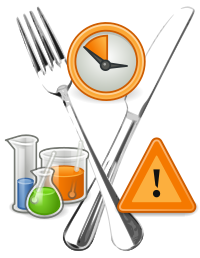
Photo from wikipedia
ObjectivesThe main objective of this study was to derive cost estimates of five major foodborne illnesses (campylobacteriosis, salmonellosis, enterohemorrhagic Escherichia coli (EHEC), yersiniosis and shigellosis) in Sweden. These estimates provide… Click to show full abstract
ObjectivesThe main objective of this study was to derive cost estimates of five major foodborne illnesses (campylobacteriosis, salmonellosis, enterohemorrhagic Escherichia coli (EHEC), yersiniosis and shigellosis) in Sweden. These estimates provide a necessary contribution to perform future cost-benefit analyses aimed at reducing the burden of foodborne disease. A secondary aim was to obtain estimates of the true number of cases that occur in the community, thus providing necessary ground for calculating costs.MethodsThe true number of cases for each foodborne illness was simulated by multiplying the reported number of cases by sequential multipliers, one for each potential source of information loss about a case. This assessment of the true number of cases was then used to estimate the number of cases of sequelae for each illness. An incidence-based analysis was then used to calculate direct medical and non-medical costs, as well as indirect costs. Data for estimating the true number of cases for each illness were primarily based on an expert panel, while the derivation of costs mainly utilized national registries, databases and published literature.ResultsThe estimated number of cases was between 7- and 11-fold higher than the reported number of cases, indicating the importance of taking information loss into account when calculating costs. By far the most common pathogen of the five was campylobacter, with an estimated 101,719 (90% credibility interval [CI] 59,640–158,025) human cases occurring annually. For salmonella, 19,678 (90% CI 8394–40,456) cases were estimated to occur each year, while the other three pathogens were less common, with a yearly incidence of approximately 2500–5500 cases each. The total cost for the five pathogens (including sequelae) amounted to €142 million annually. Campylobacter was the most costly pathogen, representing 69% of the total costs. Salmonellosis and EHEC constituted 18 and 9% of these costs, respectively, while yersiniosis and shigellosis represented approximately 2% each. Costs for sequelae were significant and accounted for approximately 50% of the total costs.ConclusionsOur simulations indicated that campylobacter infection was more common and more costly than salmonella, EHEC, yersinia and shigella combined. Estimated costs for all illnesses were highly influenced by (1) considering potential information losses about cases in the population (which increased costs 7- to 11-fold), and (2) taking account of post-infection sequelae (which doubled the costs).
Journal Title: Applied Health Economics and Health Policy
Year Published: 2018
Link to full text (if available)
Share on Social Media: Sign Up to like & get
recommendations!